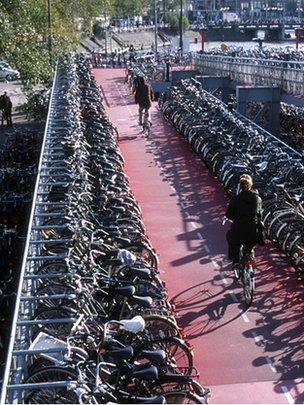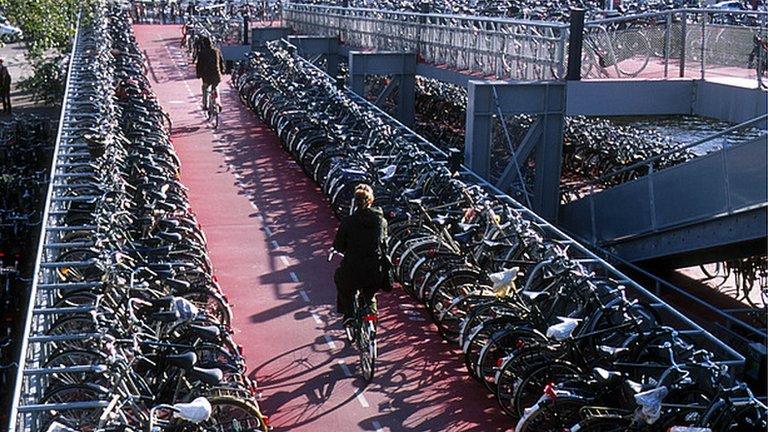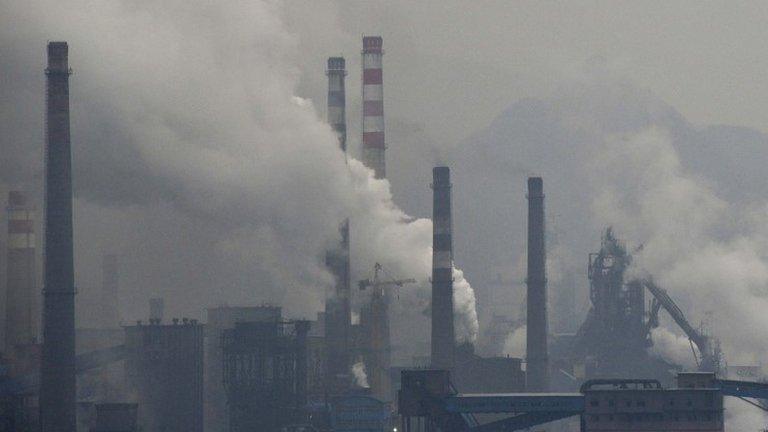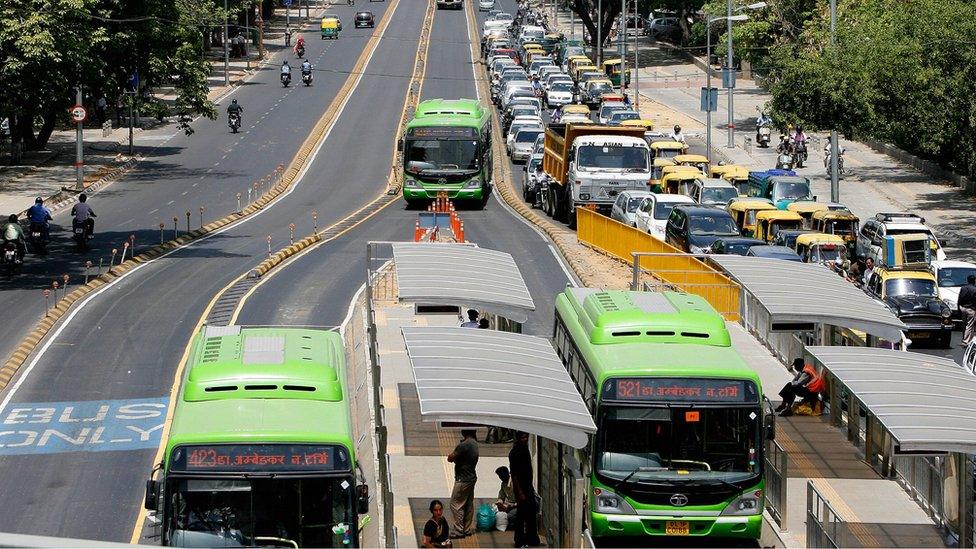Low-energy urbanisation 'can help climate goals'
- Published

Encouraging people out of their cars is one way to decouple urbanisation from intensive energy use
A study of 274 cities has helped shed light on energy consumption in urban areas and what can be done to make future urbanisation more efficient.
Globally, cities are best placed to mitigate emissions as urban areas are much more energy intensive than rural areas, say researchers.
Most people now live in urban areas, a trend that is accelerating as the global population continues to grow.
The findings appear in the Proceedings of the National Academy of Sciences, external.
The UN estimates that almost four billion people - 53% of the world's population - currently reside in towns or cities, external. By the middle of this century, that figure is set to grow to 6.3 billion. In 1950, the urban population was under 750 million people.
Writing in their paper, a team of researchers from Germany and the US observed: "The most recent Intergovernmental Panel on Climate Change (IPCC) report shows that urban areas consume between 67% and 76% of global energy and generate about three quarters of global carbon emissions.
"Additionally, to accommodate growing urbanising populations and economies, urban areas and their built environment are projected to more than triple between 2000 and 2030."
The IPCC Fifth Assessment Report, published in 2014, external, suggested that "the greatest potential for mitigating greenhouse gas emissions may lie in rapidly developing cities in industrialising countries".
The team found that the mitigation potential of urban areas on a global scale was "insufficiently understood", making it difficult to quantify what energy savings could be made through more effective planning and development.
"I think one of the central problems is that every city tends to view climate change and energy consumption as their own local problem," suggested co-author Felix Creutzig from the Mercator Research Institute on Global Commons and Climate Change, Berlin.
"On the local level, it has been understood but at a global level it is different."
In their study, the team analysed a dataset from 274 cities from 60 countries, including all of the world's 21 megacities (urban areas with more than 10 million inhabitants).
The dataset allowed the researchers to identify different profiles of energy use by cities, which could then shape bespoke climate mitigation policies for urban areas that fitted a particular energy-use profile.
Dr Creutzig told BBC News: "We looked at factors including population density and fuel prices. We found that - especially in those regions that are urbanising quickly: Asia, Africa and the Middle East - if there are higher fuel prices and good urban planning then there could be about a 25% energy saving from the business-as-usual scenario."
He added that urban areas' high energy demands, especially in industrialised nations, were influenced by a range of factors - such as population density, fuel prices, transport infrastructure and technology - and it would require a high concentration of renewable and low carbon generation technologies in order to reduce emissions while meeting the soaring energy demands of global urbanisation.
"It would make it a lot more feasible to achieve (climate) targets if we had the infrastructure that did not require so much energy," Dr Creutzig explained.
"What we are saying is that it would be super-helpful if cities were to develop in an energy efficient way.
"As our study shows, cities are indeed very different from each other but we can identify types of cities that are similar to each other (in terms of energy-use). We will then be able to see the global perspective of urbanisation."
- Published17 September 2014

- Published12 October 2010
- Published17 January 2014

- Published30 September 2011

- Published15 October 2012

- Published29 March 2011